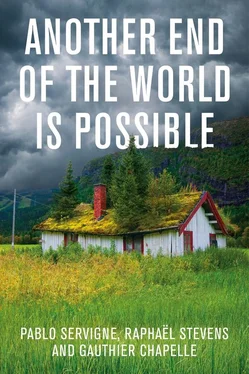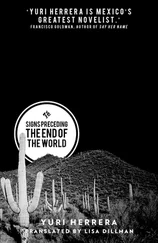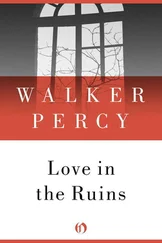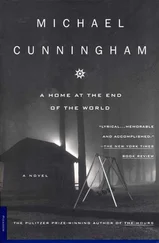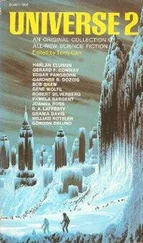Whether that is the case or not, the elites of that time, like those of today, displayed a mixture of arrogance, naivety and crude cynicism. Like today, the end of the Empire saw a dramatic rise in inequality. We can imagine that after centuries of the Pax Romana, it must have been difficult to imagine anything like the end of the Empire. It’s equally difficult for us to admit that after centuries of ‘progress’, thermo-industrial civilization and its high growth rates could fall apart.
If you have opened this book, you have probably had some intuition of such a collapse. So have I, and I am convinced, too, that the moral and political manifestations of our movement towards collapse can already be seen and felt around us. For several years, we have seen the rise of political leaders with much the same psychological profile, who gain power by skilfully stirring up and playing on fear and hatred. Repellent and pretentious, dishonest and depraved, destroying one after the other the barriers, physical as well as moral, that protect his compatriots from global violence, Trump is the epitome of these new ruling elites. Many of these politicians have been elected and have won the admiration of vast numbers of people. As this shows, the catastrophe, and the movement that carries it forward, has a moral nature before it takes physical form. As in Serge Reggiani’s song, the wolves, all too human, were able to enter Paris because they were already there. Human fellow-feeling had already deserted the city. 1Moral violence precedes and feeds physical violence, but above all it blinds us and disarms us in the face of the physical threats which signal our entry into the Anthropocene.
This is precisely why this book by Pablo Servigne, Raphaël Stevens and Gauthier Chapelle is so important. The industrial ‘party’ will soon be over. A number of vital issues, under whatever names, will again take centre stage. How this present world ends, and even more what new worlds it will give birth to, will depend very much on the connections which we are able to weave and on how we succeed in imagining our immediate future. In this respect, this book is very valuable. It is not a treatise of ‘collapsology’, like Pablo and Raphaël’s first book, 2but a book of ‘collapsosophy’. It does not aim to convince us of a probable collapse – an exercise which has already been accomplished – but to prepare us internally to face it, and in a way to go beyond it, by preparing from now on for the world that is to come, the world that we would choose to rebuild, on new principles, among the other worlds that might take shape.
Our approach to reality has driven its extreme love of the one-dimensional, its obstinate simple-mindedness, to the point of destruction. Our Paradise here on earth was to be built purely through progress (but what kind of progress?), science (that of Bayer-Monsanto and its ‘science-based’ approaches?), the quantitative, GDP, growth, competitiveness, efficiency, mastery of the material world (on what scale and for how long?), capitalism, freedom (what kind of freedom? for whom? for what end?), humanity (alone in a lifeless world?). The modern world was to be a world of easilyunderstood slogans, everything simple and straightforward. All we had to do was to keep on growing, without considering the consequences, to tear ourselves away from nature, to focus more and more on the individual, to automate everything, to go always faster and further … towards a world where finally we dread the coming of summer for fear of suffocating, or of being the victim of some extreme event, where seeing a ladybird fly has become a rare occurrence, where cities have become refuges of biodiversity because the countryside has been devastated, where the sciences, those of climate or biodiversity, that still seek to understand the world rather than to oversimplify it even more, describe nightmare futures. And so on.
It’s time to stop. We have spent too long sliding down the slope of this destructive modernity. It’s time to oppose to it our inner world, our emotions and passions, our children, our friends, our networks, our intelligence and our creativity. We can learn again to accept the complexities of reality (or rather of realities). We can learn again that our world is more than just what we can dominate, directly or indirectly, and more even than we can understand. We can restore ourselves with the wisdoms that the world has accumulated through centuries past, without sneering at them, but also without being afraid to create something new. We can bring into being the spirituality, and the spiritualities, that will allow us to remain upright in the coming storm and to rebuild a shared, open house in which we can all live.
Dominique Bourg
Philosopher, University of Lausanne
1 1. The reference is to Serge Reggiani’s 1967 song, ‘Les loups sont entrés dans Paris’ (‘The wolves have entered Paris’) – Tr.
2 2. Pablo Servigne and Raphaël Stevens, How Everything Can Collapse: A Manual for Our Times (Cambridge: Polity Press, 2020).
Preface Facing the collapse of our world
Don’t you think our epoch has a scent of collapse? Something has toppled over, something is dying on a grand scale. There are signs of the end of this world appearing in the speeches of Extinction Rebellion, Greta Thunberg and Antonio Gutierrez, the Secretary General of the United Nations, in conversations at Davos and in commentaries on the fires in Australia and Brazil and now on the Covid-19 pandemic.
This is no longer surprising: the idea that our world can collapse in the coming years is widespread. In February 2020, an opinion poll on ‘collapsology’ 1conducted by the Institut français d’opinion publique (IFOP) in five countries (France, United States, United Kingdom, Italy and Germany) found that 56 per cent of British people and 65 per cent of French think that Western civilization as we know it will soon collapse (23 per cent of British people expect it within twenty years, and 9 per cent before 2030). 2
We are now beyond discussing whether the threat is real or not. Dozens, even hundreds of ‘top scientists’ agree that global catastrophic risks (GCRs 3) need to be taken seriously. For the most sceptical readers (and it is normal to be sceptical), we have summarized the scientific works dealing with these risks in How Everything Can Collapse published by Polity in April 2020 (in French in 2015 4).
As we expected, everything is speeding up. Not so long ago, some scientists claimed that a global systemic collapse of our society and of the biosphere was possible in the near future, though without being able to specify a date. Today, we have gone a step further: some top scientists say this is the most likely scenario. 5The Doomsday Clock, which symbolizes the imminence of a planetary cataclysm, was brought forward in January 2020 to midnight minus 100 seconds. 6This cold and relentless statement is in line with that of wellknown authors from the English-speaking world who have inspired us, such as Donella and Dennis Meadows, Joanna Macy, Jared Diamond, John M. Greer, Richard Heinberg and Naomi Oreskes, to name a few.
In 2015, the rational and scientific approach of collapsology was considered ‘pessimistic’ by the political establishment and most of the mainstream media. However, the general public was already open to discuss the matter. We have seen a growing number of readers coming to our lectures who had reached similar conclusions: neither ‘sustainable development’, nor ‘green growth’, nor promises of wealth redistribution will be able stop the disasters from happening, should business-as-usual prevail. There is no doubt that humanity and the planet are heading down a catastrophic path.
Читать дальше
